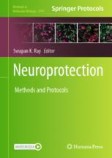Search
Search Results
-
Plasma amyloid-beta oligomer is related to subjective cognitive decline and brain amyloid status
BackgroundSubjective cognitive decline (SCD) is a target for Alzheimer’s disease prediction. Plasma amyloid-beta oligomer (AβO), the pathogenic form...

-
Plasma oligomer beta-amyloid is associated with disease severity and cerebral amyloid deposition in Alzheimer’s disease spectrum
BackgroundMultimer detection system-oligomeric amyloid-β (MDS-OAβ) is a measure of plasma OAβ, which is associated with Alzheimer’s disease (AD)...

-
Stabilization and Reduced Cytotoxicity of Amyloid Beta Aggregates in the Presence of Catechol Neurotransmitters
Oligomeric aggregates of the amyloid-beta (Aβ) peptide have been implicated as the toxic species for Alzheimer’s disease by contributing to oxidative...

-
Understanding the Mechanisms of Amyloid Beta (Aβ) Aggregation by Computational Modeling
The misfolding, aggregation, and formation of complex self-assemblies of amyloid-beta (Aβ) are the key events in the pathophysiology of Alzheimer’s...
-
Role of Amyloid Beta in Neurodegeneration and Therapeutic Strategies for Neuroprotection
The gradual loss of neurons’ structure and function in the central nervous system is known as neurodegeneration. It is a defining feature of several...
-
Cellulose ether treatment inhibits amyloid beta aggregation, neuroinflammation and cognitive deficits in transgenic mouse model of Alzheimer’s disease
Alzheimer’s disease (AD) is an incurable, progressive and devastating neurodegenerative disease. Pathogenesis of AD is associated with the...

-
Amyloid Beta–Mediated Neurovascular Toxicity in Alzheimer’s Disease
The brain vascular system receives one-fifth of the total oxygen from the cardiac output, and this transport system is highly dependent on...
-
Amyloid β oligomer induces cerebral vasculopathy via pericyte-mediated endothelial dysfunction
BackgroundAlthough abnormal accumulation of amyloid beta (Aβ) protein is thought to be the main cause of Alzheimer’s disease (AD), emerging evidence...

-
Serum Levels of Amyloid Beta and Lipocalin-2 Proteins in Patients with Alzheimer Disease and Their Demographic Determinants
AbstractThis study aimed to determine serum levels of Lipocalin-2 (LCN2) and Amyloid-beta (Aβ) proteins in Alzheimer’s disease (AD) patients and...

-
Adult-Onset Deficiency of Mitochondrial Complex III in a Mouse Model of Alzheimer’s Disease Decreases Amyloid Beta Plaque Formation
For decades, mitochondrial dysfunctions and the generation of reactive oxygen species have been proposed to promote the development and progression...

-
Intermittent hypoxia therapy ameliorates beta-amyloid pathology via TFEB-mediated autophagy in murine Alzheimer's disease
BackgroundAlzheimer's disease (AD) is the most prevalent neurodegenerative disorder. Impaired autophagy in plaque-associated microglia (PAM) has been...

-
Reduced lysosomal activity and increased amyloid beta accumulation in silica-coated magnetic nanoparticles-treated microglia
Nanoparticles have been used in neurological research in recent years because of their blood–brain barrier penetration activity. However, their...

-
Lecanemab, Aducanumab, and Gantenerumab — Binding Profiles to Different Forms of Amyloid-Beta Might Explain Efficacy and Side Effects in Clinical Trials for Alzheimer’s Disease
Immunotherapy against amyloid-beta (Aβ) is a promising option for the treatment of Alzheimer’s disease (AD). Aβ exists as various species, including...

-
Long term worsening of amyloid pathology, cerebral function, and cognition after a single inoculation of beta-amyloid seeds with Osaka mutation
AbstractAlzheimer’s disease (AD) is characterized by intracerebral deposition of abnormal proteinaceous assemblies made of amyloid-β (Aß) peptides or...

-
Alzheimer’s Research Gains Momentum and Spreads Out
In the long shadow of Alzheimer’s research into amyloid and tau biology and function, especially in 2002 and the years to follow, many significant...
-
A Brain-Targeting Bispecific-Multivalent Antibody Clears Soluble Amyloid-Beta Aggregates in Alzheimer’s Disease Mice
Amyloid-β (Aβ) oligomers and protofibrils are suggested to be the most neurotoxic Aβ species in Alzheimer’s disease (AD). Hence, antibodies with...

-

-
Is the Persistence of the Amyloid Cascade Hypothesis a Result of Constant Confirmation Bias?
Whenever a hypothesis has been around for a very long time, chances are that it has a constantly growing number of followers and a diminishing number...
-
The Amyloid Cascade Hypothesis Has to Deliver, Finally
The Alzheimer’s field has been intensively searching for a therapy, especially in the last 30 years, while the number of affected individuals has...
-
Thirty Years After the Launch of the Amyloid Cascade Hypothesis: Is there a Shift of Gears at Last?
Since the introduction of the amyloid cascade hypothesis in 1992, an impressive amount of exciting new and alternative leads on the pathogenesis of...
